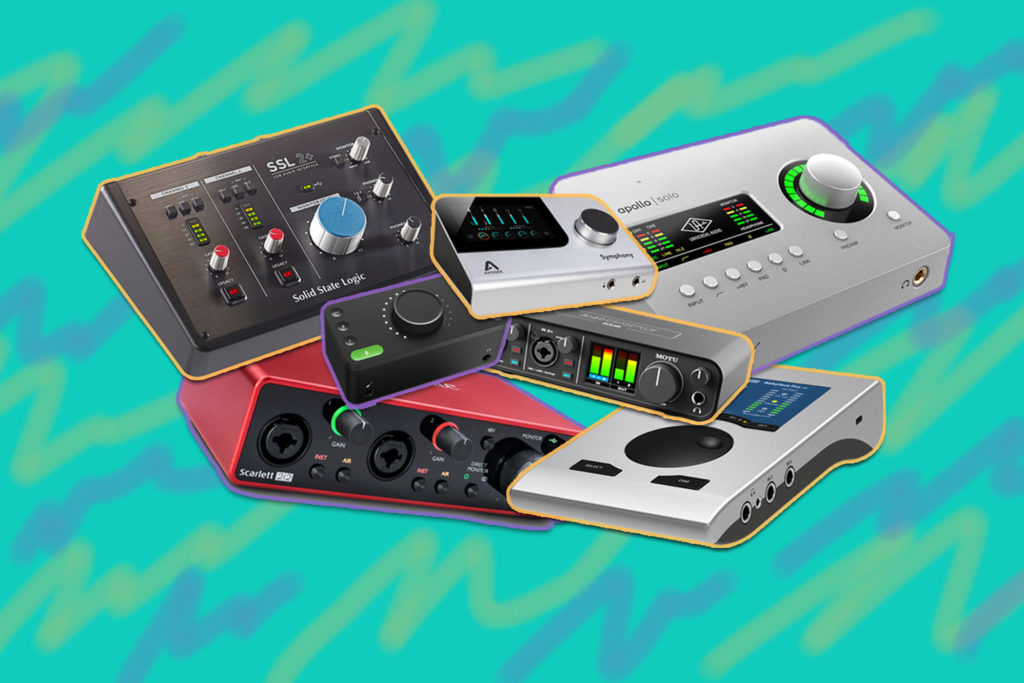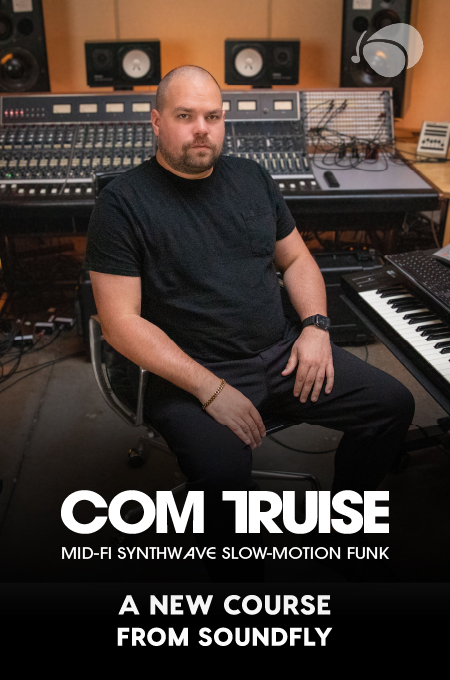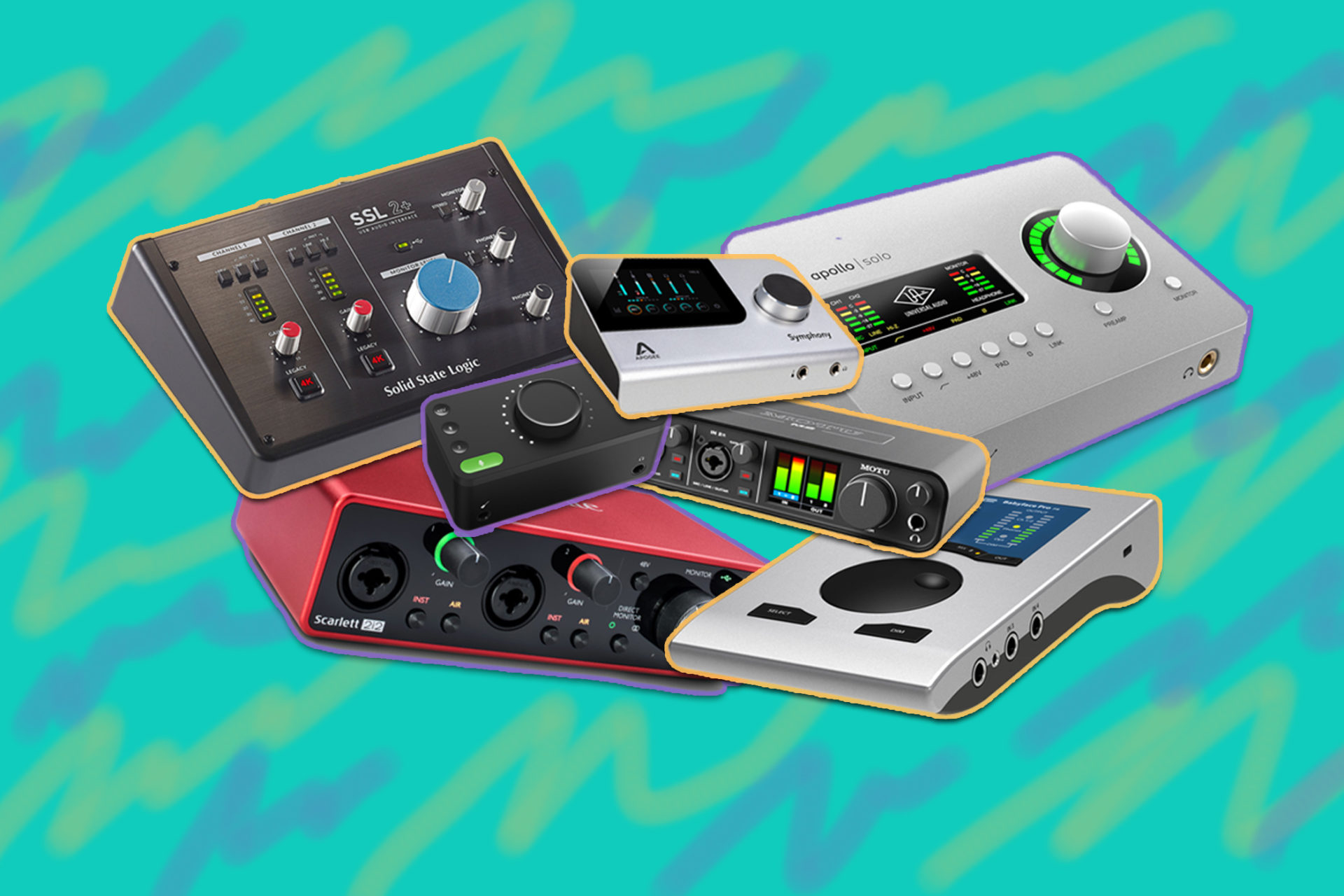
+ Learning to record and mix at home? Soundfly’s online courses on mixing, producing, and beat making can help! Preview them all for free and subscribe for full access.
Even if you have access to a major-league recording studio, a sleek home setup is always desirable for those days you can’t get to the studio, or you just want to get up in the morning and throw it down right away.
Or, if you don’t have access to a “real” recording studio, plenty of artists have proven that you can crank out hits from just about any room with electricity. To celebrate this fact, here are our four favorite audio interfaces for the home studio.
And if you’re looking to level up your audio production skills and mixing knowledge across the board, make sure to check out Soundfly’s Faders Up course series for beginner and advanced mix techniques.
Focusrite Scarlett — For Affordable Quality
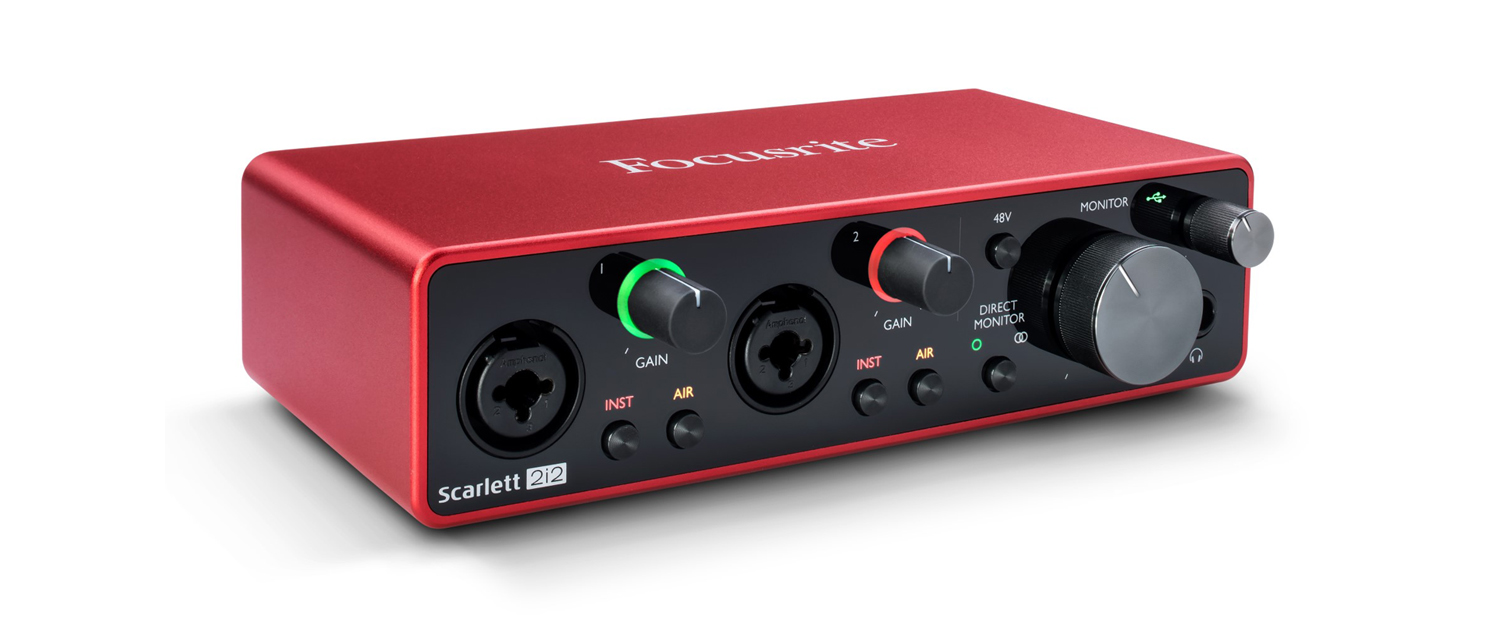
Focusrite’s Scarlett line is solid, affordable, and offers great sound quality. For sure with some low-budget USB interfaces, one might have concerns about preamp quality and the ADCs (audio-to-digital convertors) being cheap. This is not so with the Scarlett line. In fact, Focusrite preamps are renowned for clarity up and down the industry, and the “air” button adds a touch of shimmer when you need it.
At $119.99, Scarlett Solo offers two input channels — one preamp and one quarter inch — ostensibly designed for solo musicians and singer-songwriters. Scarlett 2i2 is the same basic unit with two preamps and goes for $169.99. Third generation units offer up to 192kHz sample rates, super low latency, and a simple setup. The bundle software package isn’t bad either, as it comes with plugins like: Antares Auto-Tune, the Focusrite Red plugin suite, XLN Addictive Drums and Keys, and a good smattering of Brainworx stuff.
Scarlett interfaces are a no brainer if you want to dispense with pageantry and research and just get to work.
Universal Audio Apollo Solo — For Industry-Leading Quality
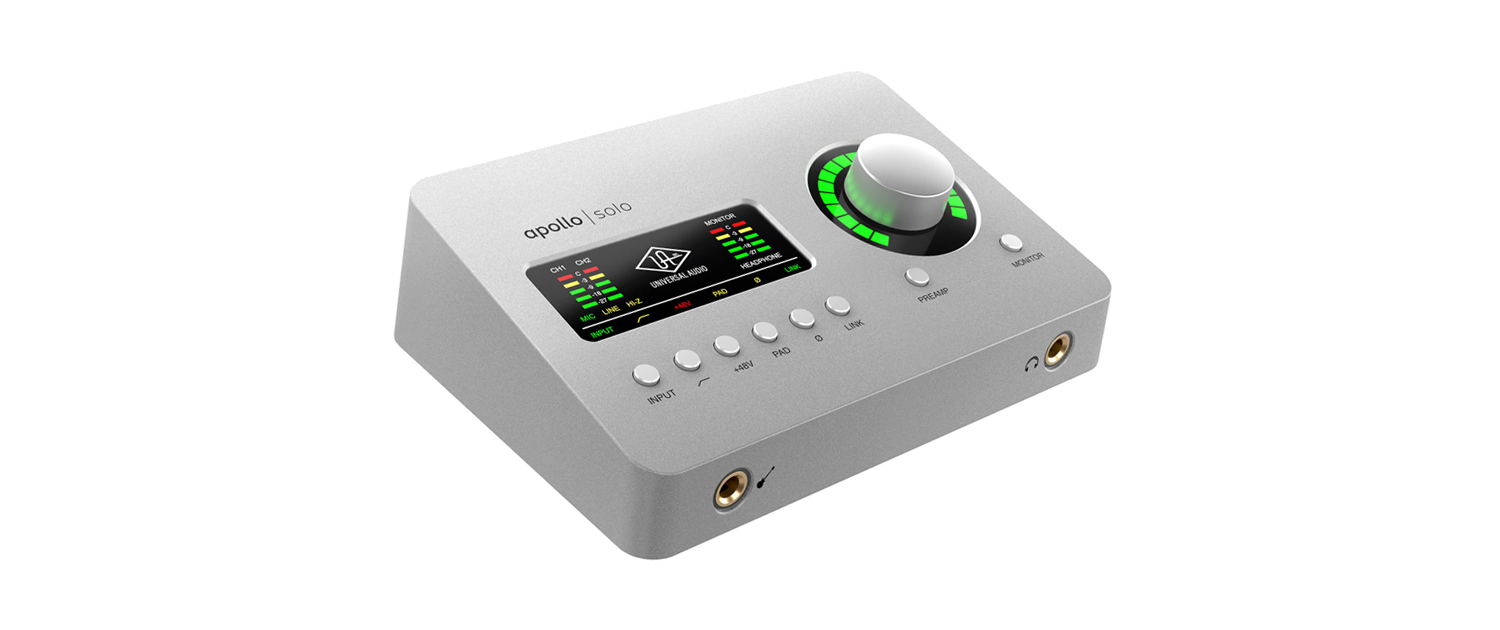
At $699.00, Universal Audio’s Apollo Solo isn’t exactly a starter interface. What it does offer, however, is a truly professional, industry standard interface to record high quality audio and no matter what level you’re at, you can rest assured that you’re doing the best possible job.
The Solo is the Apollo line’s least expensive interface, but it doesn’t skimp on quality. It’s got the same industry-leading audio-to-digital conversion, pristine preamps, and drool-inducing UAD plug-ins that you can record through in real time. Stuff like the UA 610-B Tube Preamp and the LA-2A and 1176 compressors, Neve and API preamps, and so on.
Apollo Solo comes in two flavors — USB and Thunderbolt. The USB version is only for Windows, so keep that in mind. Solo Thunderbolt is compatible with both Mac and Windows and doesn’t need an external power supply. With the Thunderbolt version, you’re looking at latency under 2ms even when tracking through all those fancy plugins in real-time.
Both Solo versions have two preamps and one instrument input for a total of three analog inputs — but only two channels of simultaneous recording. Still, for most home setups, that’s plenty, and the Apollo line is worth the price.
RME Babyface Pro FS — For Unbelievable Everything

The RME brand isn’t quite as well known as brands like Apollo and MOTU, but this German company has been making nothing but high-end, industrial quality, badass digital audio gear for longer than some recordists have been alive. A lot of their interfaces are specialized — Firewire, PCI, ADAT protocol, and so on — but the Babyface Pro FS is a sleek, two preamp USB interface perfect for the discerning home studio.
The Babyface isn’t cheap at $999.00, but if you’re looking for quality and reliability, RME is second-to-none. The unit is bus powered and has a staggering array of connectivity for its size. Four analog inputs, two preamps, two headphone outputs, ADAT and S/PDIF digital inputs and outputs for 8 digital i/o channels, two XLR outputs, and MIDI in and out.
Babyface records up to four channels at once at a top resolution of 24-bit/192kHz and comes with an impressive software bundle, including RME TotalMix FX, Total Mix Remote (iOS, Mac, PC), Brainworx Plug-ins, and Scuffham S-Gear Amp Collection.
This in addition to SteadyClock/femtosecond for ultra-stable clocking, latency-free processing (EQ, low-cut filter, reverb, echo), onboard peak/RMS metering, and even a mic stand thread on the bottom. Not to mention RME’s incredible sound quality and super low latency. If you can afford it, RME Babyface Pro is to die for.
Solid State Logic SSL2+ — For a Hi-Fi Vintage Sound
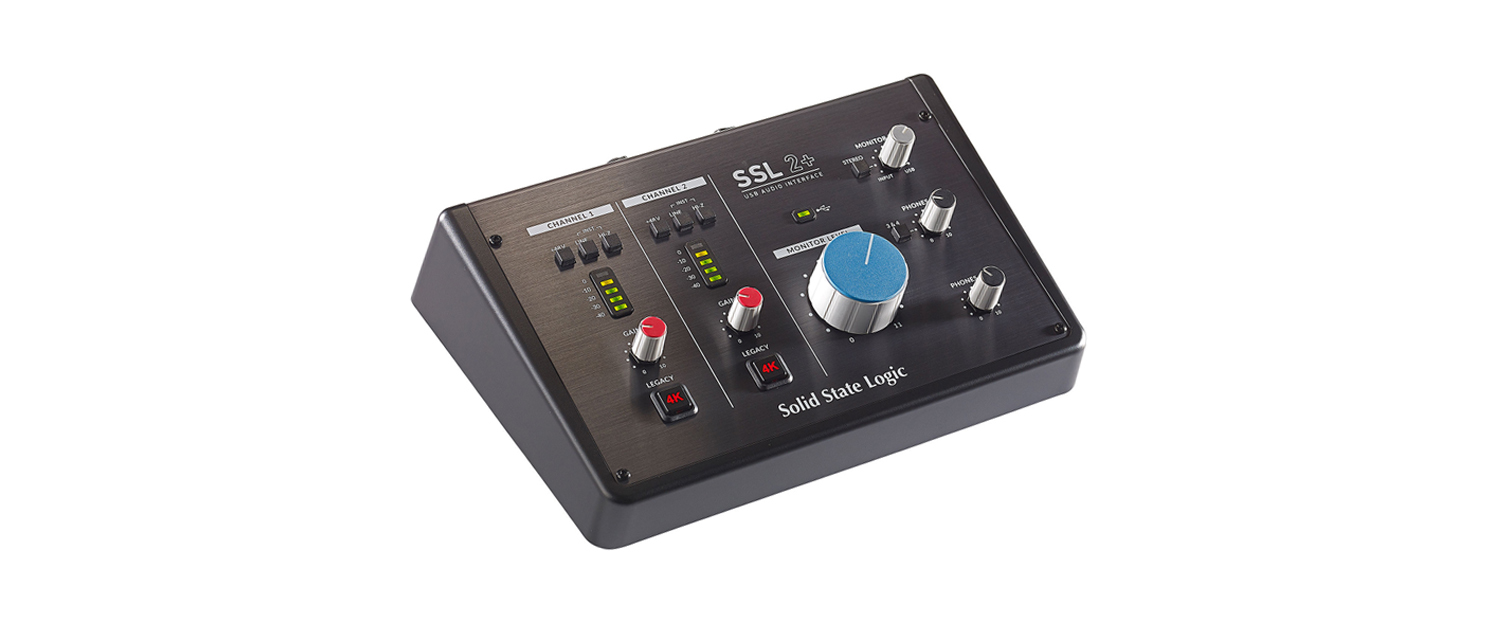
A relative newcomer to the covetable audio interface scene, Solid State Logic’s SSL2+ lists at a moderate $349.99. This little USB-C interface has all the prerequisites nailed: 192 kHz/24 bit resolution, two really strong preamps, great ADC, low latency recording, MIDI I/O, extra RCA output for DJS, and the SSL Production Pack software bundle.
All that and the big ol’ monitor level knob right in the middle are cool, but it goes the extra mile with Legacy 4K, which to quote SSL’s website is “analogue color enhancement, inspired by classic SSL consoles.” In other words, you can get that classic SSL color on any track you want right from the jump. To boot, if you don’t need MIDI or the RCA outs, you can grab the SSL2+’s little brother, SSL2, for only $269.99. The two SSL2s are definitely making waves.
3 Great Runners Up
Above are our four favorite interfaces for home studios at the moment; the Focusrite Scarlett line because they deliver high quality at starter prices, Apollo and RME interfaces because they are highly covetable hot rod badasses, and the SSL2+ because of the vintage flavor it can impart.
But these aren’t the only great options out there. Rounding out a few more solid choices (in no particular order) are the Audient Evo 4, MOTU M2, and Apogee Symphony Desktop. All of these interfaces consistently impress and have made perfect centerpieces in many home studio setups.
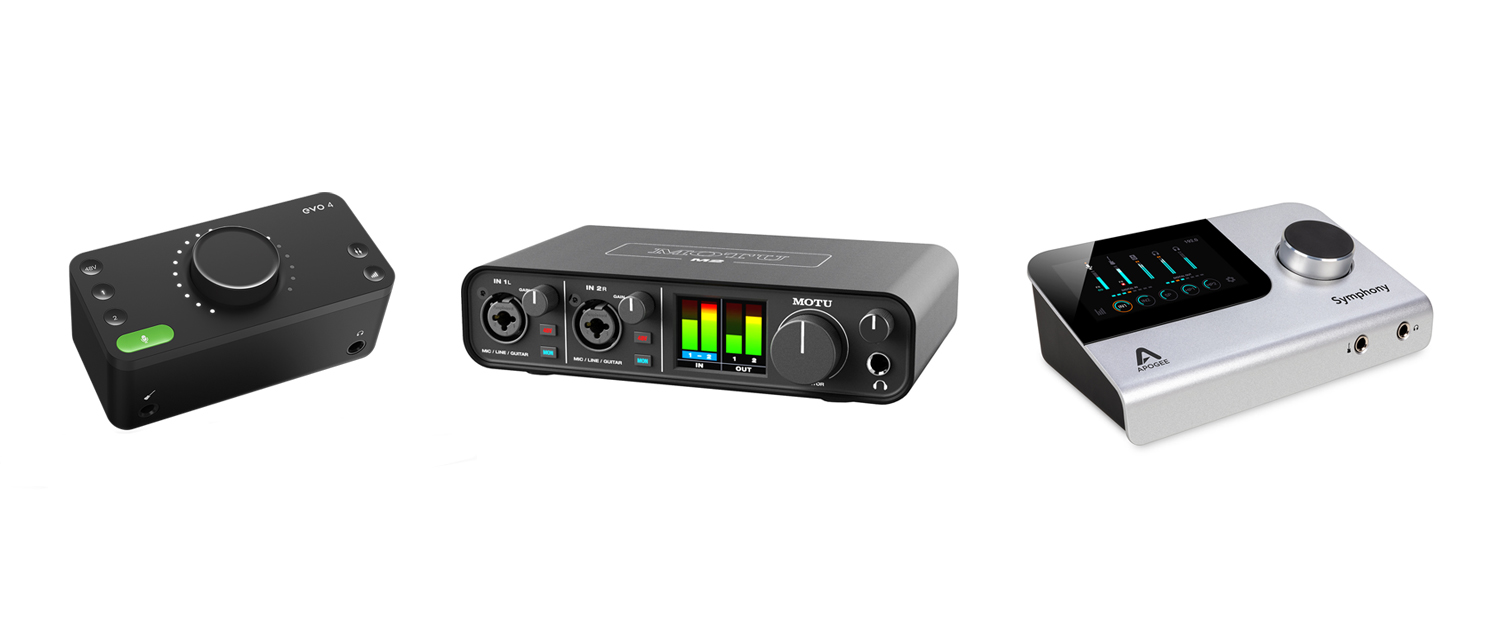
There you have it, our three favorite home studio audio interfaces, plus a few which give our three a run for their money. Now choose your weapon and get back to crushing tracks… What are you waiting for?!
Don’t stop here!
Continue learning with hundreds of lessons on songwriting, mixing, DIY home recording and production, composing, beat making, and so much more, with Soundfly’s artist-led courses, like: Jlin: Rhythm, Variation, & Vulnerability, Kimbra: Vocal Creativity, Arranging, & Production, and RJD2: From Samples to Songs.
